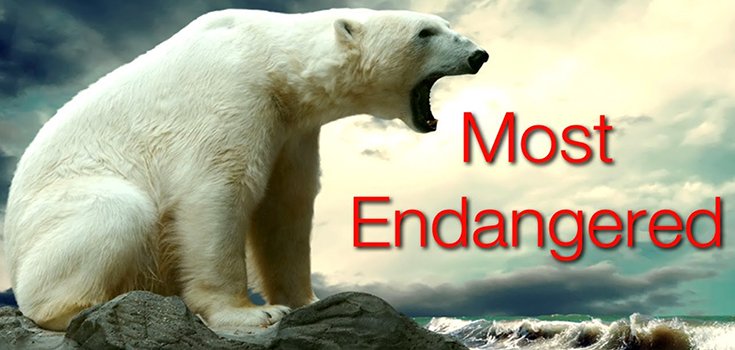Study: Sustainably-Sourced Goods are KEY for Protecting Endangered Species’

Have you ever teared up at a news story about giraffes heading towards extinction? Perhaps you symbolically adopted an elephant to save it from poaching. Your heart is in the right place. But a study released earlier this year highlights the very real damage human consumption does to threatened species and the environment.
I hate to say it, but unless it is sustainably-sourced, every time you buy something, you’re wrecking the damn planet. Thanks a lot, you … and me.
UN Report: Small Scale Organic is the Only Way to Feed the World
Research published in the journal Nature Ecology & Evolution illuminates the global hotspots most impacted by goods exported to the United States, China, Japan, and the European Union. The findings show that U.S. consumption is particularly harmful to land species from parts of Southeast Asia and Madagascar, in addition to southern Europe, the Sahel region of Africa, coastal Mexico, Central America, and Central Asia. [1]

Goods in nearly every store you visit in the U.S. originate in places where monkeys, toads, sea cows, and big cats call home. Elements like coffee and palm oil are elements that animals in shrinking habits need to survive. These resources are used in products made by 15,000 industries globally and consumed in some 187 countries, and an inordinate amount of it is consumed in the U.S. and Europe.
This results in the suffering of more than 6,500 species of wildlife. [2]

Tracking Consumption’s Impact
For the study, researchers evaluated the supply chains of a multitude of different products to trace the effects of goods on 6,800 species listed as threatened by the International Union for the Conservation of Nature (IUCN). Supply chains were found to threaten species in a variety of ways, including forestry-destroying habitats, pollution, and urban development. [1]
The researchers laid fairly new global supply-chain databases over the habitats of endangered species listed by the IUCN and BirdLife International. This allowed the team to identify the world’s “threatened biodiversity hot spots,” as they refer to them. [2]
For example, logging in Brazil to make products eventually sold in the U.S. cuts down trees used by red-face spider monkeys. Mangroves off Papua New Guinea – home to diverse plant species and an endangered sea cow – are impacted by the fishery trade and gold mined and destined for Japan.

Daniel Moran, a researcher at the Norwegian University of Science and Technology, said:
“Biodiversity hot spots is a well studied topic, and it is known that the last reserves of biodiversity are harbored in a small number of places. Economic pressure, even at the margin and in small increments, exerts pressure at these places. Almost any human pressure at the places, unless very well managed, will have a big impact on species there.”
The researchers wrote that product demand in the U.S. also affects “marine hot spots off the Caribbean coast of Costa Rica and Nicaragua at the mouth of the Orinoco around Trinidad and Tobago.” They went on to say:
“The European Union drives threats [in] hot spots outside Southeast Asia in the islands around Madagascar: Réunion, Mauritius, Seychelles.
Despite much attention on the Amazon rain forest, the U.S. footprint in Brazil is actually greater in southern Brazil, the Brazilian Highlands, where agriculture and grazing are extensive, than inside the Amazon basin, although impacts along the Amazon river itself are high.”

Humans have moved into animal habitats and now live among them so closely that even the smallest environmental impact can reverberate widely.
The study states:
“For threats driven by U.S. consumption, the 5 percent most intensively affected land area covers 23.6 percent of its total impact on species, and at sea the 5 percent most intensively impacted marine area affects 60.7 percent of threatened species habitats.”
Read: 4 Ways to Heal and Replenish our Damaged Soil and Food Supply
About $66 billion is spent on conservation efforts annually, with 90% of that going to use in developed countries far away from the most endangered locations, the researchers found.
The findings could help conservationists better direct resources to address both the source of harmful goods and the markets where they are sold, the team said. [1]
Sources:
[1] Time
